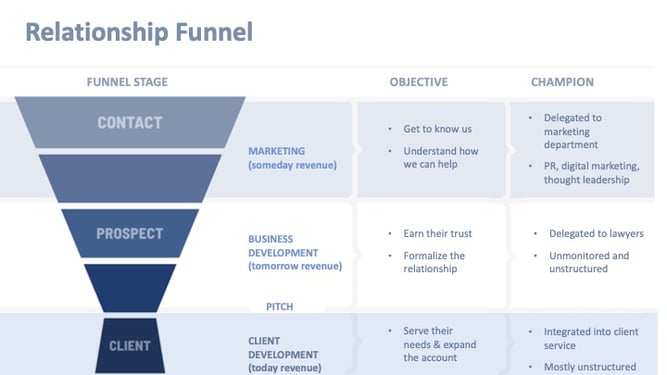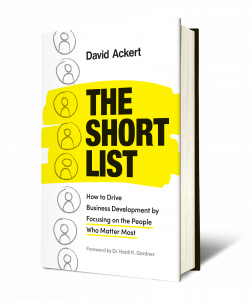The business structure of professional services firms is likely much like a corporation’s, with distinct departments for administration, operations, marketing, and finance. But there’s a fundamental difference.
At corporations, products and sales are two distinct areas of the business. In contrast, in typical professional service firms, the ones who deliver your firm’s “product” – whether lawyers, accountants, financial advisors, or consultants – are also expected to sell.
Your typical firm relies on successful seller-doers for new business development but avoids the term “sell,” instead referring to its best seller-doers as rainmakers. Unfortunately, very few people have the rainmaker’s unique ability to excel at both client service and bringing in significant business.
Plus, seller-doers must navigate competing directives. While their billing quotas are clear, they have no sales quotas to speak of – just the general expectation they’ll both bill hours and bring in as much business as possible.
Forward-looking firms, however, operate more like their corporate counterparts to maximize business development success. Here are the top three things they’re doing that your typical firm isn’t:
They have sustained sales, training, and support structures.
Your traditional professional services firm operates differently than a corporation because it has no sustained sales infrastructure. Firms rarely have systems or processes in place, structured models to follow, or consistent training to ensure that seller-doers optimize their business development potential.
As a result, it’s easier for seller-doers to focus on organic revenue opportunities – the 80% of your firm’s total revenue that comes mainly from developing existing client relationships. Most seller-doers are much more comfortable responding to client demands and providing good service than nurturing prospects.
On the other hand, forward-thinking firms emulate corporations and launch long-term training initiatives to support their seller-doers at every stage of their careers. And in place of typical sales management, they adopt sustained, proactive support structures that keep seller-doers focused on business development throughout their careers.
They analyze the relationship funnel to forecast the future.

Your typical firm’s marketing department drives activity through public relations, digital marketing, and thought leadership. While marketing leads are valuable, they’re only speculative – in other words, they may someday result in revenue. At the bottom of the funnel, your client development promises likely revenue in the short term, as your firm services clients’ needs and organically earns more business from them.
But at the middle of the funnel, the business development that ensures mid-term revenue is the least mined opportunity. Unlike at a corporation, where the sales team nurtures the middle of the funnel, your firm leaves this job to seller-doers who have an unmonitored and unstructured sales process and are more interested in billing hours than analyzing opportunities and tracking relationships.
Most typical firms fail to realize that if you rely on the traditional analysis of past revenue and realization, you’ll never know where you’re going; you’ll only be able to assess where you’ve been. Forward-looking firms learn how to analyze their relationship funnel, and in doing so, can get a picture of their future.
They fully leverage technology.
Your typical firm is slow to adapt to changing market conditions and fails to use new business development capabilities. However, forward-looking firms have higher adoption of their business development technology and, in turn, can more effectively forecast revenue growth.
In your typical firm, very few seller-doers have a formal relationship management system in a dedicated CRM. Usually, about half have no formal system for opportunity tracking at all, and about a third use static tools like Word or Excel.
And, while a good starting point for your typical firm, just having a CRM is not enough – you must use it. Forward-looking firms use technology that allows seller-doers to manage their business development contacts and activities. They track things like business development opportunities, marketing activities, and seller-doer business development performance and then use insights from the data to create informed solutions to help reach their business development goals.
And, finally, forward-looking firms use their technologies’ data visualization features. They use customized business intelligence dashboards that can automatically pull data from multiple platforms to create visually compelling reports that help their marketers and business developers make efficient and strategic decisions.







